Both Apple Music and Tidal are famous digital music streaming services that give users access to millions of songs with high streaming quality. Apple Music offers playlists and albums inspired by the artists and genres to the preferences of its users. Tidal brings studio-quality music to music fanciers who are looking for the highest quality audio.
Maybe you’re a user of one of the two services and considering switching to the other service, or a newcomer who has no idea which service to prefer. Apple Music vs Tidal? I explore the two platforms and make a comparison in terms of different aspects to help you conclude.
Contents Guide Part 1. Apple Music vs Tidal: 6 Differences to LearnPart 2. How to Enhance Your Experience with Apple MusicPart 3. Summary
Apple Music and Tidal are two popular music streaming services. Apple Music is part of Apple's suite of services and offers a wide variety of music and features such as podcasts and Apple Radio. Tidal, on the other hand, is known for its high-quality audio and exclusive content, including music videos and interviews with artists.
Both services offer monthly subscriptions and can be streamed on a variety of devices. It ultimately comes down to personal preference and what features are important to the user. Below we compare the two music streaming services from the perspectives of music library, audio quality, subscription plan and pricing, music sharing, discovery feature, and ease of use. Let's get started.
Apple Music subscribers have access to over 90 million songs. You can have up to 100,000 songs added to your library and downloaded to your devices for offline listening. Apple Music allows you to have 10 devices (no more than five computers) associated with your Apple ID, and you cannot stream music to more than one device at a time. In addition, you can sync your downloaded music across your Apple devices thanks to its iCloud Music Library.
Tidal also has more than 90 million songs in its music library, level-pegging with Apple Music. But you are allowed to download 10,000 songs which is much less than the number Apple Music allows. Tidal enables you to use one device in online mode and five devices in offline mode at once. And you can sync the songs to other devices using the same Tidal account, too.
The audio quality between Apple Music and Tidal mainly depends on the file format used for streaming, as well as the encoding and compression technology applied. Apple Music uses AAC files, which are of lower quality than the higher-quality lossless files used by Tidal (ALAC or FLAC).
Apple Music offers CD-quality (16-bit/44.1kHz), Apple Music Lossless (24-bit/48kHz), and Hi-Res Lossless (up to 24-bit/192kHz) streams while Tidal offers music in quality up to 24-bit/192kHz. Tidal's HiRes FLAC can deliver superior sound in files as large as 24-bit, 192 kHz. But Apple Music uses its own Apple Lossless Audio Codec for streaming.
Apple Music offers 3+1 types of subscription plans: Individual Plan, Family Plan, Student Plan, and Voice Plan. Each newcomer can have a one-month free trial. Voice Plan is an audio-only plan costing you $4.99 per month. You are not allowed to download your songs and listen to them offline with the Voice Plan.
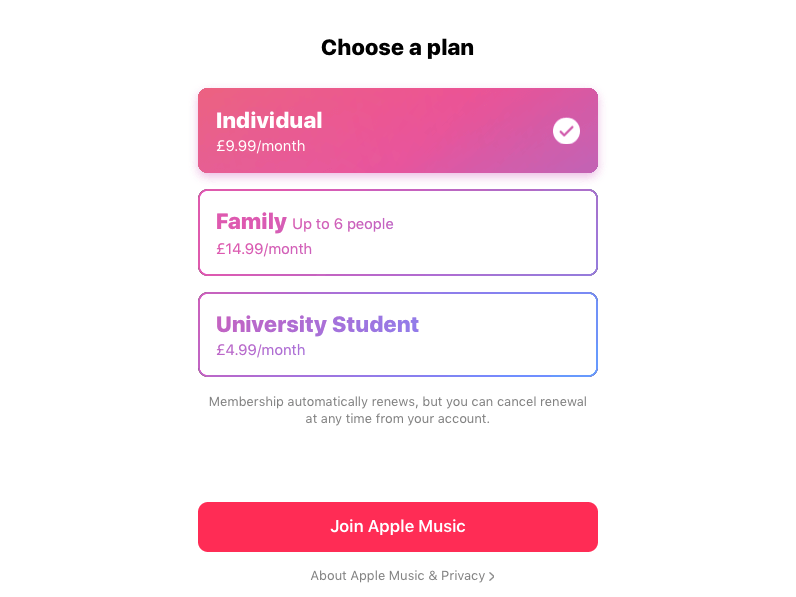
Apple Music Individual Plan costs you $9.99 per month, and college students can enjoy the Student Plan, which is the same as the Individual Plan except that it only costs $5.99 per month. Family Plan costs $14.99 per month and can include up to six people who will have their own music library and personalized recommendations. Both plans can access the full catalog in CD Quality lossless audio.
Tidal offers 4 subscription plans: HiFi, HiFi Plus, Family HiFi, and Family HiFi Plus. It also offers a 30-day free trial. Both HiFi ($9.99/mo) and Family HiFi ($14.99/mo) can enjoy standard sound quality (1411kbps). Both HiFi Plus ($19.99/mo) and Family HiFi Plus ($29.99) enjoy lossless high-fidelity sound quality (1411kbps), Master Quality audio (9216kbps), and immersive audio. Both Family Plans enable up to six family members.
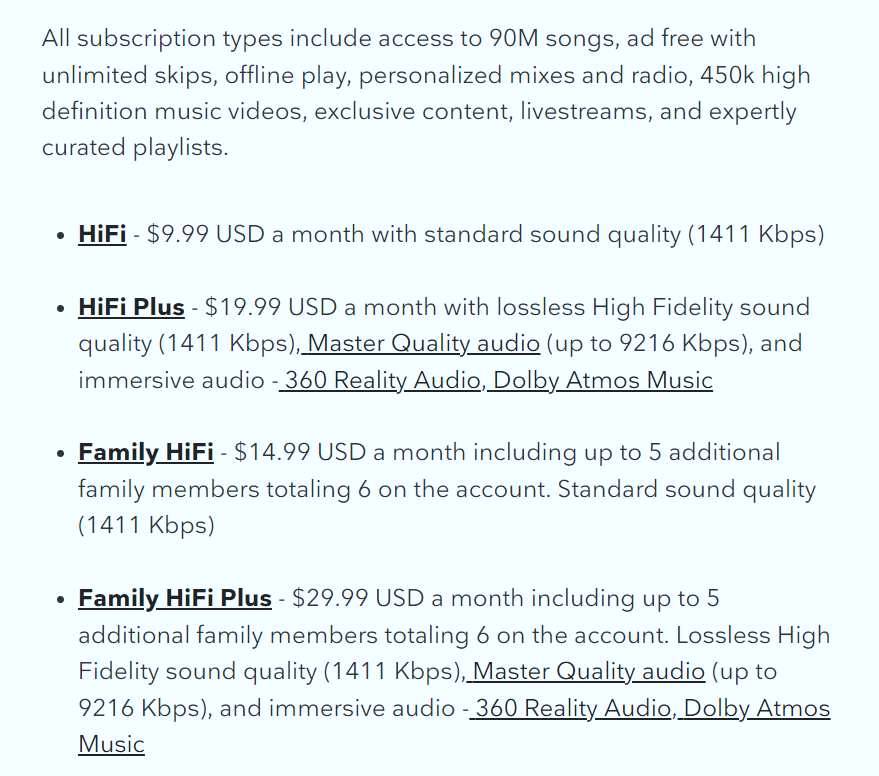
In addition, Tidal offers many discounted plans mostly available only in the US. Student HiFi ($4.99/mo) and ($9.99/mo) must confirm eligibility and reverify every 12 months. Military HiFi costs $5.99 per month and $11.99 per month. Community Heroes Plans for EMTs, EMS, firefighters, and police officers cost the same as Military Plans.
Apple Music allows you to see what your friends are listening to on its For You tab if you’ve followed them. You can also share or hide the playlists after creating and publishing an Apple Music profile. This feature is not available in Voice Plan.
Tidal doesn't have such an equivalent feature as Apple Music, but you can copy and paste the URL of the tracks, albums, and playlists into a text and send it to your friends. You can also connect to Facebook and Twitter to share the songs via the two platforms and see tracks from friends who subscribe to Tidal as well.
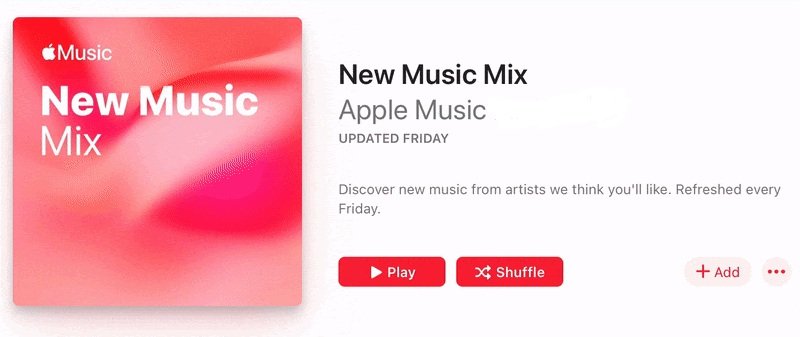
Apple Music will ask you to choose your favorite artists when you sign up and keep track of your listening habits to get a sense of your music tastes. Then, it will recommend songs accordingly on the For You tab. The New Music Mix update every Friday is where Apple Music shows you a personalized list of 25 new songs.
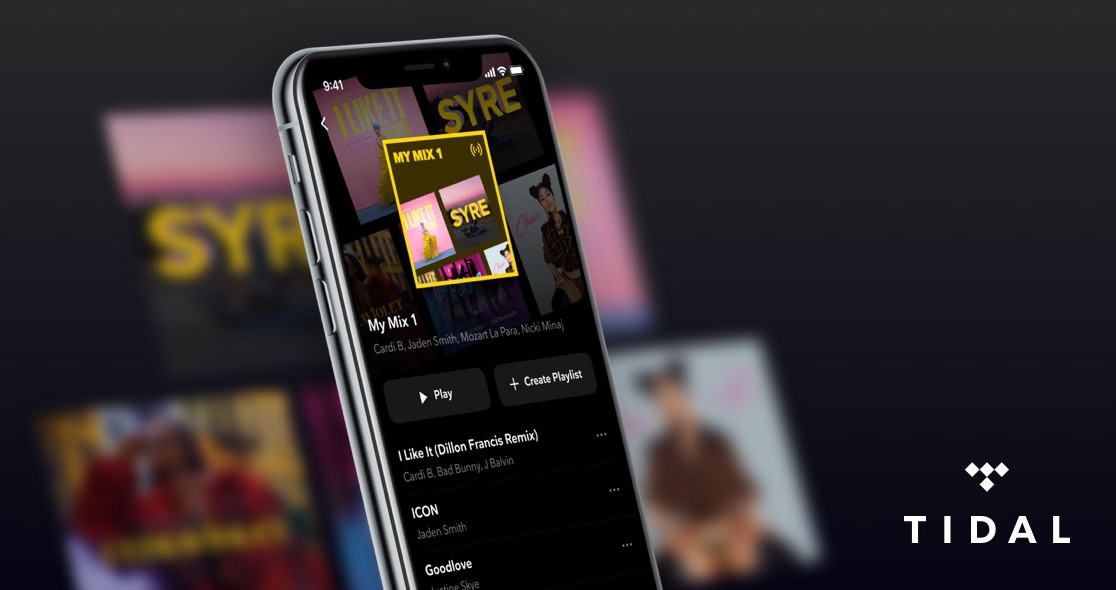
Tidal will not show the personalized curated playlist to a newcomer until you have listened to enough music for its algorithms. Maybe after a day or two, you can find My Mix on your My Collection page. Mixes include your latest favorites and songs with similar vibes. The more music you listen to, the more often your mixes are updated.
Apple Music and Tidal are both music streaming platforms. A music streaming platform must be easy to navigate. Poor UX design can prevent users from using features as intended, which is a major issue if a monthly subscription fee is involved.
From the perspective of availability, Tidal is available on all major platforms, including Windows, Android, iOS, and Mac. However, if you live in an area where Tidal is not available, you will need to use a VPN to sign up for an account. Apple Music, on the other hand, is available on Android, iOS, and Mac, but there is no dedicated Apple Music app for Windows. To listen to the audio, you must use the web player, which streams at a maximum of 256 kbps. This is not a lossless streaming method.
From the perspective of the user interface, Tidal's app interface is consistent across platforms, featuring a black color scheme. However, users who prefer light themes may find it unappealing. The interface is user-friendly, with tabs such as 'Explore' and 'Home' providing access to both new and familiar music catalogs.
In contrast, Apple Music's macOS desktop app boasts a modern design with a minimalist layout and prominently displayed album artwork in the central library. However, the playback control is located at the top, which may be counterintuitive, as most other apps have it at the bottom, including Apple Music mobile.
Both services have their benefits. It’s really hard for me to decide which is better. But if Apple Music is the winner of the Apple Music vs Tidal battle for you, this part is going to take your experience with Apple Music to the next level.
Apple Music subscribers probably know that the downloaded songs are under DRM protection. Once you cancel the subscription, it will be automatically deleted from your device. So, if you want to save your Apple Music songs forever, some professional tools can help you.
One of the tools I highly recommend is the DumpMedia Apple Music Converter. It allows you to convert Apple Music to popular music formats and save them on your devices while maintaining 100% lossless quality. Meanwhile, the ID3 tags of the songs can help you easily manage your playlists. Here’s a step-by-step guide for you.
Step 1. Add Apple Music to DumpMedia Apple Music Converter
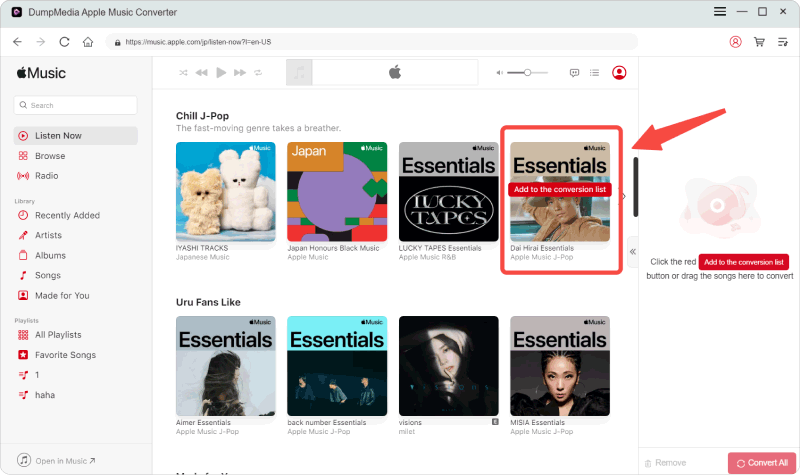
First of all, download Apple Music songs to your Mac or Windows computer and sync them to your iTunes Library. Then, download and install DumpMedia Apple Music Converter. After launching it, the software will scan your iTunes Library and get Apple Music songs.
Step 2. Customize Apple Music output settings and metadata
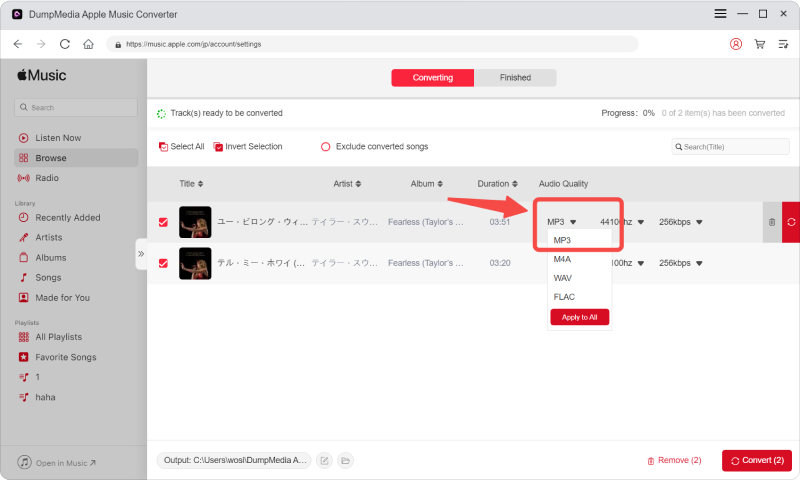
You can find your songs listed in the upper right section. Click to mark them as the songs you want to convert. In the lower right section, you can manage the output format, quality, and folder. If you want to change the ID3 tags, you can go to the Metadata tab beside Output Settings.
Step 3. Convert Apple Music songs to save them on your device
Click the Convert button in the lower right corner. You can check the status on the Converting tab. Once the songs are converted, you can go to the Finished tab and see the storage folder by clicking View Output File.
Apple Music vs Tidal? This article compares the two services in terms of their Music Library, Subscription Plan, Music Sharing, and Discovery Feature. You can make a judgment depending on your situation. If you are apt to choose Apple Music, DumpMedia Apple Music Converter can definitely be helpful!
